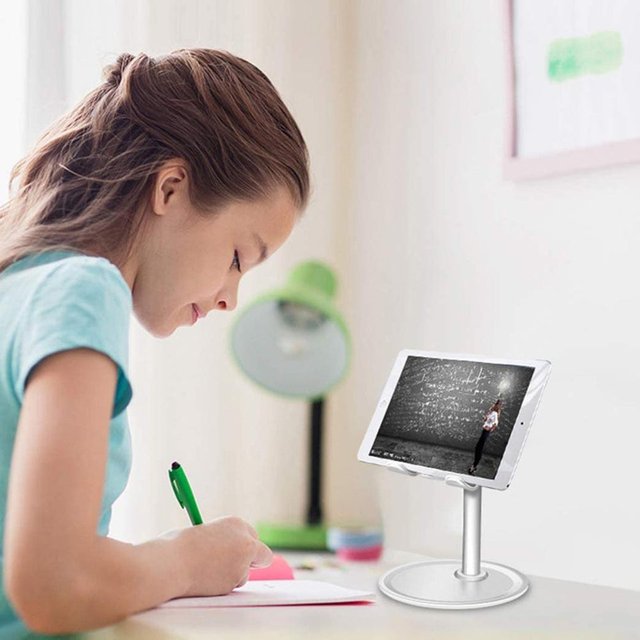How Tablets Can Make Studying Easier for Students

Learning feels smoother when the right tools remove daily stress and guesswork. A tablet becomes more than a gadget; it is a single hub for books, notes, and practice materials.
With simple taps, students can quickly search chapters, mark ideas, or review lessons. Short videos explain hard concepts, while quizzes reveal what to focus on next.
Shared folders let classmates support each other without delay, and families can follow schedules to encourage balance at home. Teachers also benefit by posting tips or answering questions in real time.
The goal is not more screen time, but smarter, focused study time. Tablets fit naturally into short breaks or commutes, turning small moments into steady progress.
1. All Notes in One Place
Loose papers cause stress because important details are hidden or lost.
A tablet gathers class notes, slides, readings, and photos in one spot. Students can type, handwrite, or record audio during lectures or labs. The best tablet for school makes this even easier by offering smooth note-taking apps, reliable performance, and long battery life.
With cloud backup, notes sync across devices and stay safe from accidents. Study sessions begin faster because setup takes only a few seconds. Students can focus on understanding, not hunting for missing materials anymore.
Over time, better organization frees energy for practice and review. Calm systems make space for thinking, and thinking is what scores points. One tidy home for notes is a simple, powerful step toward success.
2. Reading Tools That Reduce Friction
Digital textbooks on tablets can be kinder to tired eyes and brains. Adjustable text size and spacing make long chapters easier to follow slowly.
A built-in dictionary defines tough words without leaving the current page. Highlighting in different colors keeps the main ideas and details clearly apart.
Audio read-aloud supports focus during commutes or while resting eyes.
Quick search jumps to a topic, which helps before a quiz or test.
Sticky notes store questions to ask the teacher in the next class.
Links inside the text open figures, glossaries, and practice problems fast.
Students finish assigned readings with less frustration and fewer stalled moments. The result is stronger comprehension and better use of study time daily. Small gains compound over weeks and show up in class confidence.
3. Smart Schedules and Gentle Reminders
Many students know what to do, but forget when to do it. Tablets help by turning large tasks into smaller steps with due dates.
Calendar apps show classes, labs, and assignment milestones in one view. Reminders nudge at safe times so alerts do not become noise. Checklists break projects into actions that feel doable and specific.
When plans change, drag-and-drop moves tasks without rewriting pages again. Shared calendars help group members keep promises and avoid last-minute stress.
4. Quick Feedback with Practice Apps
Learning speeds up when students see results right after they try. Practice apps give instant checks on math steps, grammar, or key facts.
Short quizzes show what is solid and what needs more time today. Hints guide thinking without handing over the full answer too fast. Mistakes become useful because they point to the next smart action clearly.
Progress dashboards keep track of streaks and gaps across each unit. Teachers can assign targeted sets that match the class pace and goals.
Use five- to ten-minute sets to avoid burnout and protect focus.
Mix old and new skills so memory stays fresh across the term.
Turn off extra sounds if they distract from careful reading of items.
Review missed questions first to turn errors into the next lesson.
5. Collaboration Without Chaos
Group work fails when files scatter across apps and inboxes, sadly. Tablets fix this by keeping documents, slides, and chat in shared spaces. Everyone works on the same file, and changes appear in real time.
Version history shows who added what, which keeps teamwork honest. Comment threads replace long email chains that are hard to follow.
Tasks can be assigned with dates so work moves forward steadily. During meetings, students can present from the tablet without extra cables. Photos of lab results upload right away for the group to analyze.
When everything lives together, energy goes to ideas, not logistics. Clear tools make it easier to listen, decide, and finish on time.
6. Study Anywhere, Even in Short Moments
Tablets make use of small pockets of time that often go to waste. Flashcard apps shuffle terms and equations for quick review on the bus. Downloaded videos and readings work offline when Wi-Fi is unstable.
Audio lessons turn walks into a light review without looking at screens. Camera scanning converts handouts into searchable PDFs in seconds. Widgets on the home screen show goals and keep them top of mind.
With earbuds and a simple plan, studying fits into daily life smoothly. Short sessions add up and reduce the need for late-night cramming. Students feel lighter because progress continues even on busy days steadily. This steady rhythm matters more than one long push before exams.
Conclusion
Studying gets easier when tools match how our brains learn best. Tablets collect notes, books, and practice, so time goes to thinking.
Reading feels smoother, and feedback arrives fast enough to guide the next step. Groups share work without chaos, and plans adjust without lost effort.
Short sessions fit into real days, keeping progress steady and calm. Health settings protect focus and sleep, which power learning across weeks. None of this replaces teachers, families, or hard work from students. It simply removes friction so effort can shine and build results.
Start small, set simple goals, and keep what truly helps you learn. With balance and care, a tablet becomes a quiet partner in success. Over time, those quiet gains turn into strong grades and real confidence.